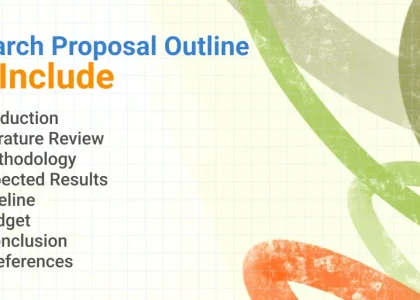Writing a PhD dissertation is one of the most challenging yet rewarding tasks of your academic journey. It requires deep research, careful structuring, and clear writing. If you are feeling overwhelmed, don’t worry! This guide will break down the entire process into simple, manageable steps so you can confidently complete your dissertation.
Step 1: Understand the Dissertation Requirements
Before you start writing, make sure you fully understand your university’s dissertation guidelines. These rules cover word count, formatting, citation style, and submission deadlines. Clarifying these details early will save you time and effort later.
Step 2: Choose a Strong Research Topic
Your dissertation topic should be interesting, relevant, and researchable. It must contribute something new to your field of study. Keep these points in mind when selecting a topic:
- Interest: Choose a topic you are passionate about, as you will be working on it for a long time.
- Relevance: Ensure your topic addresses a gap in existing research.
- Feasibility: Consider the availability of data and research material.
Step 3: Develop a Research Proposal
Before you start the main dissertation, you will likely need to write a research proposal. This document outlines:
- Your research question
- The objectives of your study
- The methodology you plan to use
- Expected outcomes
- A review of existing research in the field
Getting your proposal approved is crucial because it serves as a roadmap for your dissertation.
Step 4: Conduct an Extensive Literature Review
A literature review helps you understand existing research related to your topic. Here’s how to do it effectively:
- Find Relevant Sources: Use academic journals, books, and credible online databases.
- Organize Information: Group similar studies together to identify trends and gaps.
- Critically Analyze: Don’t just summarize—evaluate each study’s strengths and weaknesses.
Step 5: Define Your Research Methodology
Your methodology explains how you will conduct your research. It should include:
- Research Approach: Will you use qualitative, quantitative, or mixed methods?
- Data Collection Methods: Interviews, surveys, experiments, or case studies.
- Data Analysis Techniques: Statistical analysis, thematic analysis, or comparative analysis.
Be clear and detailed in this section to justify your research choices.
Step 6: Start Writing Your Dissertation
Once you have gathered enough research, it’s time to start writing. Your dissertation typically follows this structure:
1. Introduction
- Introduce your topic and explain why it is important.
- Present your research question and objectives.
- Provide a brief overview of your dissertation structure.
2. Literature Review
- Discuss previous research related to your topic.
- Highlight gaps in existing knowledge.
- Explain how your study will fill these gaps.
3. Research Methodology
- Describe the methods you used for data collection and analysis.
- Justify why these methods are appropriate for your study.
4. Data Analysis & Findings
- Present the results of your research.
- Use tables, graphs, and charts to make data easier to understand.
- Interpret the findings in relation to your research question.
5. Discussion
- Analyze the significance of your findings.
- Compare your results with existing studies.
- Acknowledge any limitations of your research.
6. Conclusion & Recommendations
- Summarize key findings.
- Provide recommendations for future research.
- Reflect on the overall impact of your study.
Step 7: Edit and Proofread Your Work
Once you have finished writing, take the time to revise your dissertation. Follow these steps:
- Take a Break: Step away from your dissertation for a few days before revising.
- Check for Clarity: Ensure your arguments are clear and logically structured.
- Proofread for Errors: Look for grammar, spelling, and formatting mistakes.
- Get Feedback: Ask a peer, mentor, or professional editor to review your work.
Step 8: Prepare for Your Dissertation Defense
Most PhD programs require you to defend your dissertation before a panel of experts. Here’s how to prepare:
- Know Your Research: Be ready to explain and justify your methodology and findings.
- Anticipate Questions: Think about potential questions the panel might ask.
- Practice Your Presentation: Rehearse in front of peers or mentors for confidence.
Final Thoughts
Writing a PhD dissertation is a long process, but with proper planning and dedication, you can successfully complete it. Break down your work into small tasks, seek guidance when needed, and stay motivated.
By following this step-by-step guide, you’ll be well on your way to submitting a high-quality dissertation that makes a valuable contribution to your field.
Good luck!






